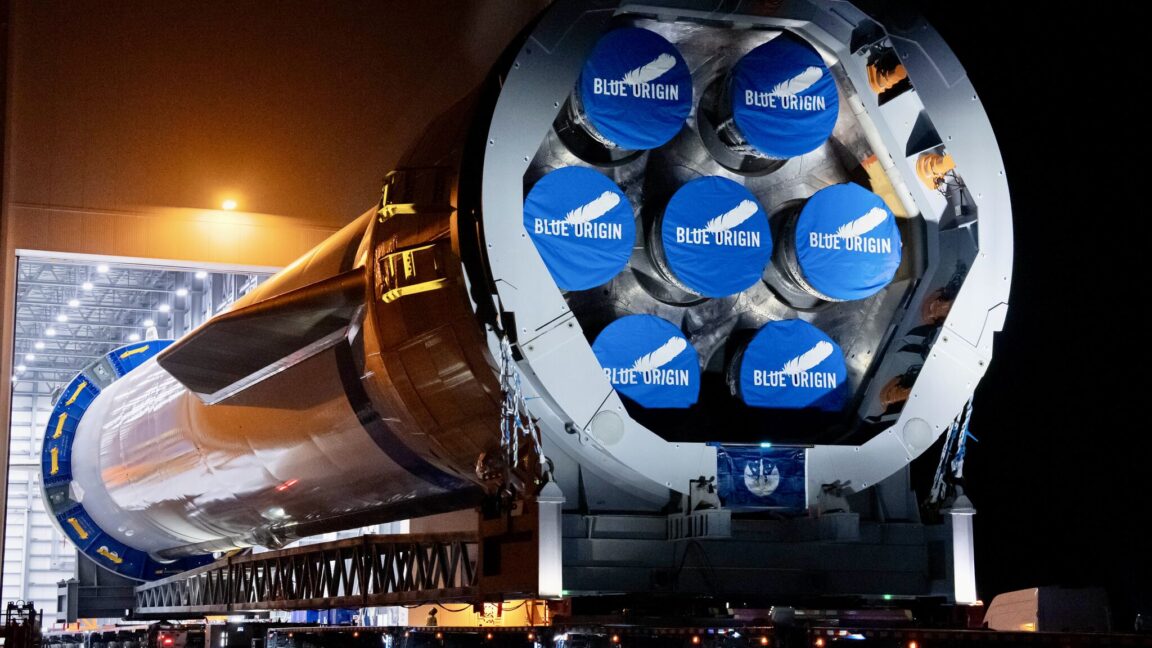
Blue Origin took another significant step toward the launch of its large New Glenn rocket on Tuesday night by rolling the first stage of the vehicle to a launch site at Cape Canaveral, Florida.
Although the company’s rocket factory in Florida is only a few miles from Launch Complex 36 at Cape Canaveral Space Force Station, because of the rocket and transporter’s size the procession had to follow a more circuitous route. In a post on LinkedIn, Blue Origin’s chief executive, Dave Limp, said the route taken by the rocket to the pad is 23 miles long.
Limp also provided some details on GERT, the company’s nickname for the “Giant Enormous Rocket Truck” devised to transport the massive New Glenn first stage.
“Our transporter comprises two trailers connected by cradles and a strongback assembly designed in-house,” Limp said. “There are 22 axles and 176 tires on this transport vehicle. It’s towed by an Oshkosh M1070, a repurposed U.S. Army tank transporter, with 505 horsepower and 1,825 pound-feet of torque.”
The transporter can only take certain roads due to its length, 310 feet (95 meters), and height with the rocket on board. The New Glenn booster has a diameter of 23 feet (7 meters), which is far too large to transport beneath conventional bridges.
A big step
Moving the rocket to the launch site is a key sign that the first stage is almost ready for its much-anticipated debut. Development of the New Glenn rocket would bring a third commercial heavy lift rocket into the US market, after SpaceX’s Falcon Heavy and Starship vehicles. It would send another clear signal that the future of rocketry in the United States is commercially driven rather than government-led. Critically, New Glenn is also designed to have a fully reusable first stage, which will attempt a droneship landing on its first flight.
The rocket must still undergo two key milestones, completing a wet dress rehearsal in which the vehicle will be fully fueled and its ground systems tested. This will be followed by a hot-fire test during which the first stage’s seven BE-4 rocket engines will be ignited for several seconds.

